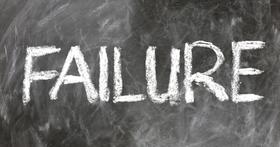Serving 355 students in grades Prekindergarten-5, Martin Luther King Jr Elementary School ranks in the bottom 50% of all schools in Florida for overall test scores (math proficiency is bottom 50%, and reading proficiency is bottom 50%).
The percentage of students achieving proficiency in math was 40-44% (which was lower than the Florida state average of 52%). The percentage of students achieving proficiency in reading/language arts was 25-29% (which was lower than the Florida state average of 52%).
The student-teacher ratio of 19:1 was higher than the Florida state level of 17:1.
Minority enrollment was 97% of the student body (majority Black), which was higher than the Florida state average of 65% (majority Hispanic and Black).
Top Rankings
Martin Luther King Jr Elementary School ranks among the top 20% of public schools in Florida for:
Category
Attribute
Percent Eligible For Free Lunch
School Overview
School Type
Grades Offered
Grades Prekindergarten-5
(No virtual instruction)
(No virtual instruction)
Total Students
355 students
Gender %
Total Classroom Teachers
19 teachers
School Rankings
Overall Testing Rank
#2984 out of 3662 schools
(Bottom 50%)
(Bottom 50%)
Math Test Scores (% Proficient)
40-44%
52%
Reading/Language Arts Test Scores (% Proficient)
25-29%
52%
Science Test Scores (% Proficient)
11-19%
52%
Student-Teacher Ratio
19:1
17:1
American Indian
n/a
n/a
Asian
n/a
3%
Hispanic
1%
37%
Black
95%
21%
White
3%
35%
Hawaiian
n/a
n/a
Two or more races
1%
4%
All Ethnic Groups
Participates in the National School Lunch Program (NSLP)
Yes
Eligible for Free Lunch
85%
47%
Eligible for Reduced Lunch (20-21)
2%
4%
School Statewide Testing
School District Name
Source: National Center for Education Statistics (NCES), FL Dept. of Education
Frequently Asked Questions
What is Martin Luther King Jr Elementary School's ranking?
Martin Luther King Jr Elementary School is ranked #2984 out of 3,662 schools, which ranks it among the bottom 50% of public schools in Florida.
What percent of students have achieved state testing proficiency in math and reading?
40-44% of students have achieved math proficiency (compared to the 52% FL state average), while 25-29% of students have achieved reading proficiency (compared to the 52% FL state average).
How many students attend Martin Luther King Jr Elementary School?
355 students attend Martin Luther King Jr Elementary School.
What is the racial composition of the student body?
95% of Martin Luther King Jr Elementary School students are Black, 3% of students are White, 1% of students are Hispanic, and 1% of students are Two or more races.
What is the student-teacher ratio of Martin Luther King Jr Elementary School?
Martin Luther King Jr Elementary School has a student ration of 19:1, which is higher than the Florida state average of 17:1.
What grades does Martin Luther King Jr Elementary School offer ?
Martin Luther King Jr Elementary School offers enrollment in grades Prekindergarten-5 (No virtual instruction).
What school district is Martin Luther King Jr Elementary School part of?
Martin Luther King Jr Elementary School is part of Duval School District.
In what neighborhood is Martin Luther King Jr Elementary School located?
Martin Luther King Jr Elementary School is located in the Northside neighborhood of Jacksonville, FL. There are 18 other public schools located in Northside.
Recent Articles

Public School Open House & Enrollment Season Guide
A parent-focused guide to the public school open house and enrollment season, with expert questions, timelines, and decision tips.

School Supply Budget 2026: Fees, Books, Tech Costs
School Supply Budget 2026 guide for parents, covering fees, textbooks, technology, and hidden extras to plan ahead.

Education Funding in America (2025 Update)
Comprehensive 2025 update on public school funding in America, new federal and state policies, per-pupil spending, and equity challenges.





